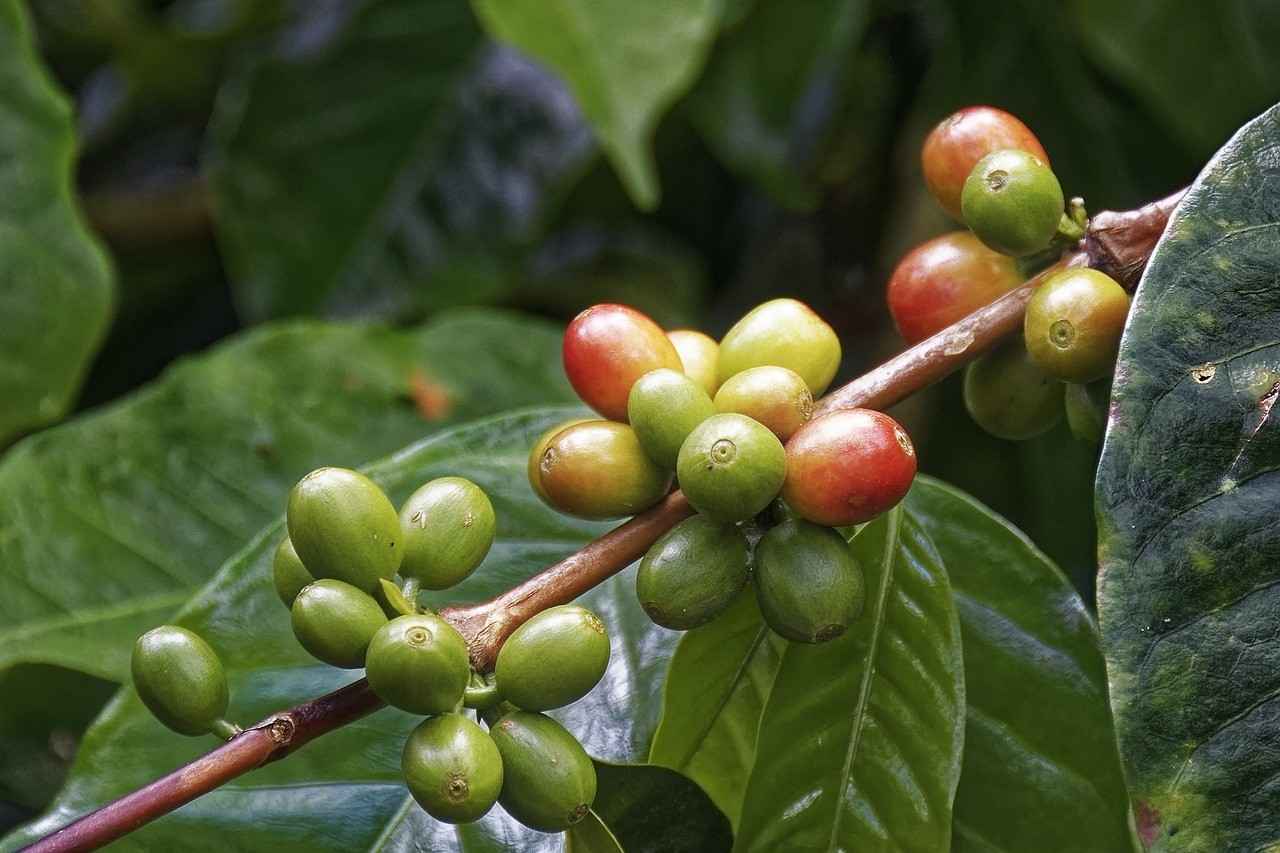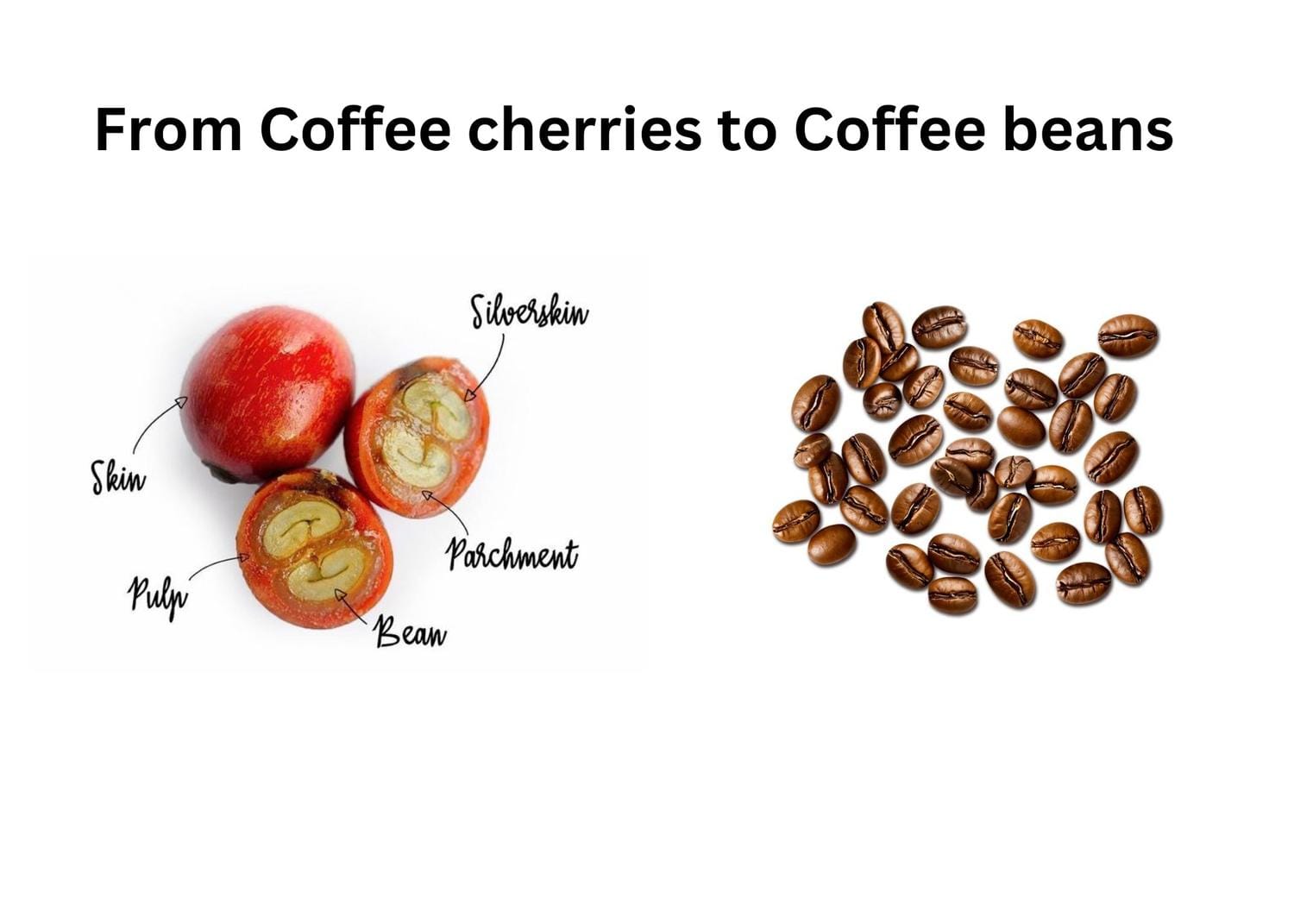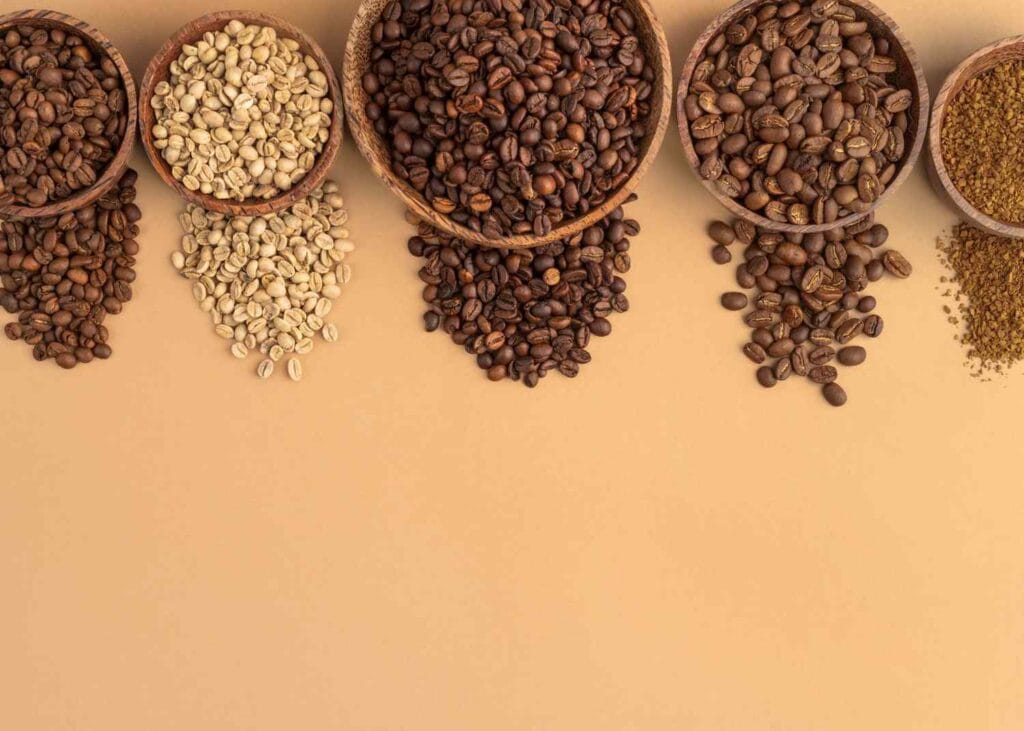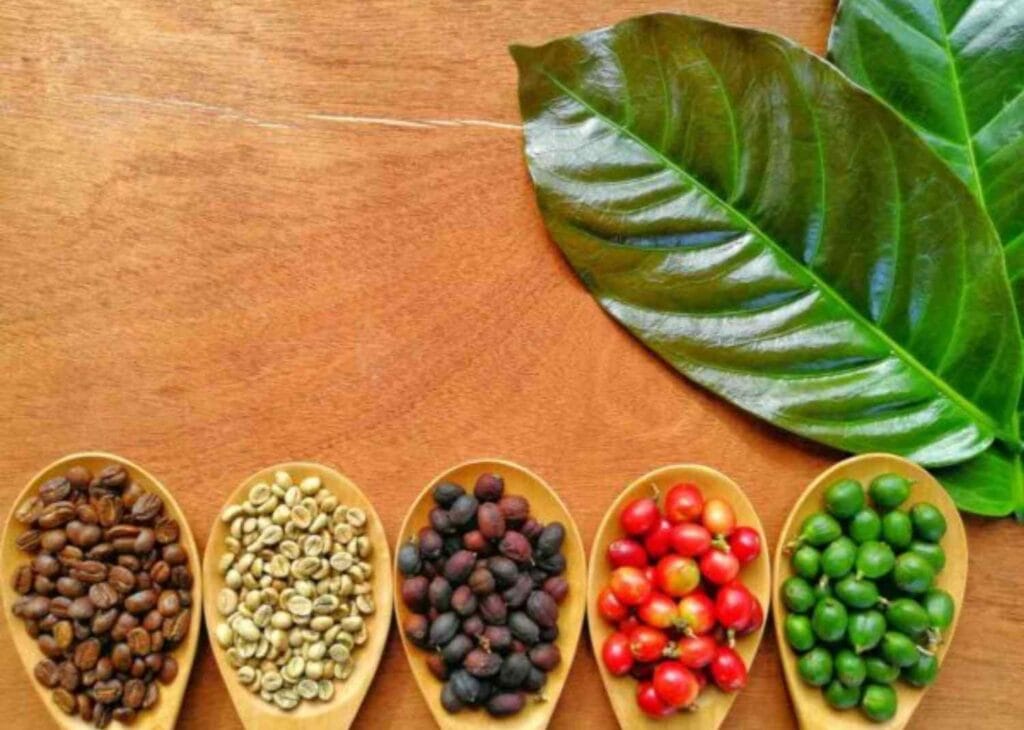What Are Coffee Beans? Here is the Expert Guide
What are coffee beans technically?
Coffee beans are Seeds, However, their bean-like appearance makes them bean celebrity
One of my close friends asked me, what makes your favorite cup of coffee so special? Maybe it’s because of the brewing method that always creates high flavor profile coffee. It is one of the reasons for sure. But, It’s totally fine to say that it all begins with coffee beans. What Are Coffee Beans? They’re the tiny, magical seeds that fuel your mornings, social gatherings, and even late-night study sessions.
But how much do you truly know about these cherry seeds? From their origin story to how they’re grown, processed, and enjoyed, there’s a world of fascinating details waiting to be discovered. Coffee lovers, seize your coffee cup☕. I am gonna cover almost everything about coffee beans: their history, types, uses, and even tips to choose and store them like a pro.
By the end, you’ll collect some precious coffee knowledge.
History of Coffee Beans
Do you know where do coffee beans come from? The story of coffee beans dates back centuries. Coffee was discovered in Ethiopia. Guess what, a goat herder discovered a coffee plant. He was Kaldi, who identified that his goats were becoming unusually energetic after eating red cherries from a tree. Curious, Kaldi tried the cherries one day himself. He experienced a similar boost in energy and this is how we get an energy booster, thanks to Kaldi!

From Ethiopia, coffee made its way to Yemen, where it became a beloved beverage. By the 15th century, coffee reached the Arabian Peninsula. At that time it was a vital part of trade and culture in the area. Eventually, it spread to Europe, Asia, and the Americas, becoming a global phenomenon.
What Are Coffee Beans?
Are coffee beans cherries? I mean, it’s fine to say that. These are seeds of the coffee tree AKA Coffea plant. The coffee seed is found inside a small, colorful fruit (red or purple) called a coffee cherry. These cherries grow on Coffea trees, thriving in tropical climates worldwide.
Want more details? Let’s go through the Anatomy of a Coffee Bean.

You might be thinking, what is in a coffee bean, or where lies the coffee bean in the cherry? Let’s simplify it!
The Coffea fruit, the Coffee cherry consists of the following layers:
- Exocarp: The outer skin of the coffee cherry.
- Mesocarp: The fleshy pulp beneath the skin.
- Parchment: A protective layer around the bean.
- Silver Skin: A thin layer that clings to the bean.
- The Bean: The actual seed, which can be roasted and ground to make coffee.
Green coffee beans (unroasted) look and feel very different from the roasted coffee beans. Roasting transforms the color of green beans, texture, and flavor, releasing the aromatic compounds we associate with coffee.
In about 5% of coffee cherries of the word, there’s only one bean instead of two. These coffee cherries are known as peaberry (or “caracol” in Spanish). This natural mutation is prized for its sweeter, more vibrant flavor and is often handpicked for specialty sales.
Nutritional Composition and Health Benefits
Although there is a fine amount of caffeine content in coffee beans, yet they have some health benefits. Coffee beans are small but mighty when it comes to nutrition:
- Antioxidants: Help fight free radicals, promoting overall health.
- Caffeine: Boosts energy and focus.
- Vitamins and Minerals: Like magnesium and potassium, which support bodily functions.
Health Benefits:
- Enhances physical performance.
- Prevents diabetes, may protect the liver, and reduces the risk of Parkinson’s.
- Improves mood and brain function.
Potential Risks:
Too much caffeine can cause jitters, insomnia, or an upset stomach. Moderation is key.
Types of Coffee Beans
Not all coffee beans are the same, though. There are hundreds of coffee plant species in the world and dozens of coffee bean types. However, only two are widely used and we have two other rare ones too:
Arabica
Extracted from Coffea Arabica, Arabica is popular for its smooth and mild flavor. Coffea Arabica plants are grown at high altitudes (mostly in Latin Africa) to get the higher flavor profile Arabica beans. This coffee type makes up 60-70% of the world’s coffee because the plants are easy to care for and the same goes for their pruning. Arabica is sweet in flavor with hints of fruit and sugar. That is why almost everyone can consume it easily.
I love Arabica. Do you?
Robusta
Robusta is the second most popular coffee bean type in the world. It is popular in espresso blends. Robusta is admired for its higher caffeine content, earthy, and bitter bold taste. These coffee trees are grown in hot climates with irregular rainfall. Robusta beans can be grown at different altitudes. Robusta coffee beans have double the caffeine content as compared to Arabica. So, if you want higher caffeine content, call a coffee, yes that is Robusta!
According to Statista, global production of Arabica coffee reached over 97 million bags (each weighing 60 kg) in 2023-2024 while Robusta accounted for just over 74 million bags during the same period.
Liberica
Liberica coffee beans are rare. They grow mainly in Southeast Asia. This is the only type of coffee bean that has an irregular shape. Also, these coffee beans are larger in size as compared to other coffee bean types. Their flavor is floral and smoky.
Excelsa
Excelsa is a sub-species of Liberica, offering a unique tart and fruity flavor.
Each type of coffee has its unique characteristics, making coffee tasting an adventure for your palate. I suggest varying your Cups of coffee to explore more taste. However, you can choose from popular Arabica or Robusta. The choice is yours!
| Did You Know? |
|---|
| Kopi Luwak is the world’s most expensive coffee. Interestingly, this expensive coffee is the poop of civet cats. |
How Are Coffee Beans Produced?
The coffee production journey is interesting. It’s a labor-intensive process. Coffee production involves several important steps. Every step requires proper care to deliver the best beans.
Cultivation
Coffee plants grow best in tropical regions where the soil is rich and enjoys plenty of rain. Coffee cherries grow happily in the temperature between 73 and 82 °F (23 and 28 °C). Brazil, Colombia, and Vietnam are the top producers of coffee beans in the world.
Harvesting
The blooming and ripping period varies from type to type. For example, for Arabic cherries to rip, it takes almost 7 months while for Robusta, the period is about 9 months. Coffee cherries are picked when they appear red-purple. Farmers use two methods for harvesting coffee cherries. One is Hand-picking which ensures only ripe cherries are selected and the second one is Machine harvesting which is faster but less precise.
Hulling
In the hulling of cherries, they are processed to remove the beans with different techniques. The disengaging of coffee seeds is done either by wet process or dry process. In the Wet (Washed) process, cherries are soaked, and the pulp is washed away. This creates a clean, bright flavor. While in the Dry (Natural) process, cherries are dried in the sun, producing a fruity taste.
The third technique is Honey processing, which is a mix of both methods. In this process, the cherries are pulped first and then dried and fermented resulting in a sweet and balanced flavor.
Roasting
Now, the processed green coffee beans are all set to be roasted. Roasting coffee beans is fun, I mean thoes roasting voices. I love it! The roasting process increases the bean’s flavor and aroma. There are three main roast levels in the whole coffee bean roasting process:
- Light: Bright, acidic, and mild.
- Medium: Balanced with more body.
- Dark: Bold, smoky, and rich.
The roasting process of coffee beans lasts for 7 to 20 minutes. The heating process occurs at temperatures between 180°C (356°F) and 250°C (482°F). The temperature level depends on the roast type—light or dark. During the roasting process, coffee beans release steam, CO2, CO, and other gases. If the beans were decaffeinated using solvents, roasting eliminates nearly all traces of them.
Roasting also causes the beans to lose 14–23% of their weight while expanding by 30–100% due to gas pressure. The result? Deep brown beans with a porous, crumbly texture and a burst of rich flavor.
Storage
How long does coffee beans last for? An year or 2 if stored properly. Prolonged coffee storage is an important concern for coffee producers. These beans need to be stored as soon as possible, especially in humid coastal areas, where there are more chances of parasites and molds attacking coffee beans.
Are you concerned about how to store coffee beans properly? Don’t worry, I have some quick tips for you:
Keep your beans fresh with these tips:
- Store in an airtight container.
- Keep in a cool, dark, and dry place.
- Avoid freezing or refrigerating, as moisture can ruin the beans.
Pro tip: Only grind beans right before brewing for the best flavor. Believe me, this will change your coffee flavor!
Uses of Coffee Beans
Coffee beans are incredibly versatile.
- Brewing Coffee: They’re the foundation of espresso, drip coffee, French press, and more.
- Cooking: Coffee adds depth to desserts like tiramisu and even savory dishes like stews.
- Skincare: Ground coffee beans are popular in exfoliating scrubs.
Some even eat roasted coffee beans as a crunchy, caffeinated snack!
How to Choose the Right Coffee Beans
When picking coffee beans, consider these quick tips:
- Taste: Prefer sweet? Try Arabica. Want strong? Go for Robusta.
- Roast Level:
- Light: Bright and fruity.
- Dark: Bold and smoky.
- Packaging: Look for airtight bags with roast dates. Freshness matters!
Final Thoughts
I hope now you are a bit clear about whether Is coffee bean a cherry or what.
Coffee beans are much more than seeds—they’re a symbol of culture, craftsmanship, and community. From their origins in Ethiopia to your favorite cup of coffee, their journey is remarkable.
Arabica and Robusta are the leading types of coffee beans. These tiny seeds are everything for those who love bold aroma and taste. I mean just like me!
Coffee lovers, find your best brewing method to enjoy delicious cups of coffee every day. Whether you prefer bold espresso or a light Arabica, there’s a whole world of flavor waiting for you.
So, what are you waiting for? Grab your favorite beans, brew a cup, and enjoy the magic of coffee!
FAQs About Coffee Beans
What is the scientific name for coffee beans?
The scientific name for coffee beans depends on the species. The most common are Coffea arabica (Arabica coffee) and Coffea canephora (Robusta coffee).
Are coffee beans berries?
Somehow they’re. Coffee beans are fruit seeds. Coffea plants produce berries which are actually cherries. The seeds of these cherries are coffee beans, that are further processed and roasted to give an aromatic brown appearance.
How are coffee beans different from other seeds?
They’re seeds but are called beans because of their shape. Unlike many seeds, they’re processed, roasted, and ground for brewing into a beverage.
What’s the difference between Arabica and Robusta?
Arabica is mild, smoother, and sweeter while Robusta is stronger with high caffeine, and more bitter. Moreover, Arabica is preferred for specialty coffees, while Robusta is often used in instant coffee and espresso blends.
Are green coffee beans healthier?
Yes, they have more antioxidants like chlorogenic acid as compared to roasted ones. Chlorogic acid has health benefits such as supporting weight management and reducing blood pressure.
What’s the shelf life of coffee beans?
About 6-12 months if stored properly. To retain the best flavor, store them in an airtight container. Make sure to keep coffee beans away from heat and moisture. Note, whole beans last longer than ground coffee.


